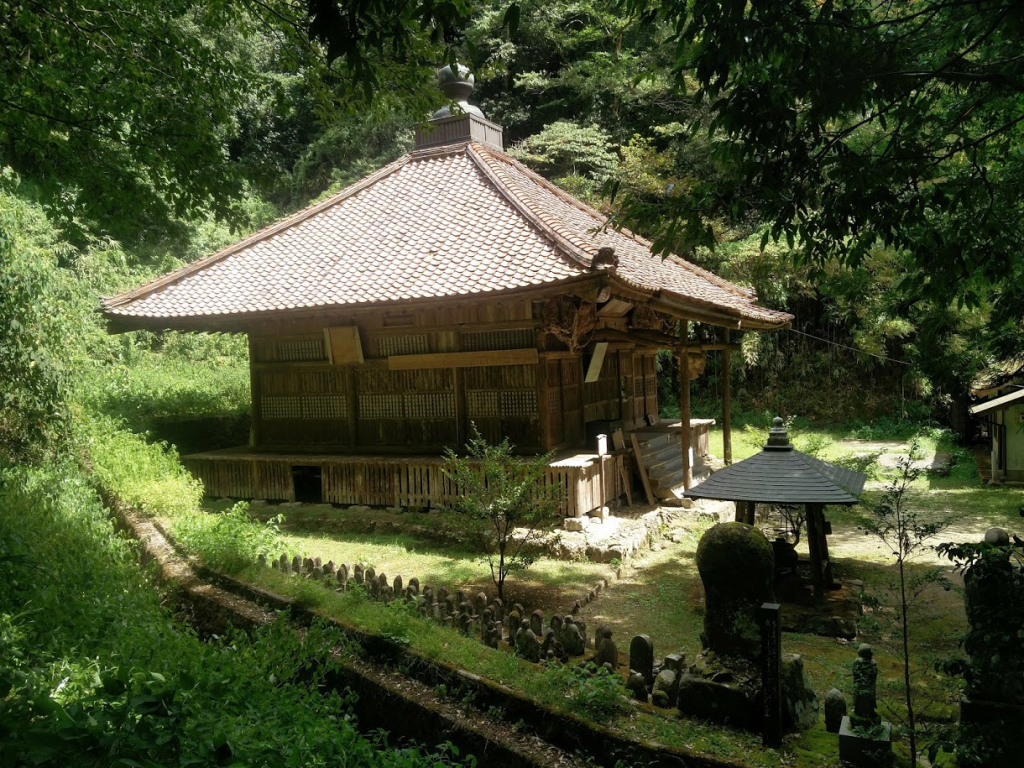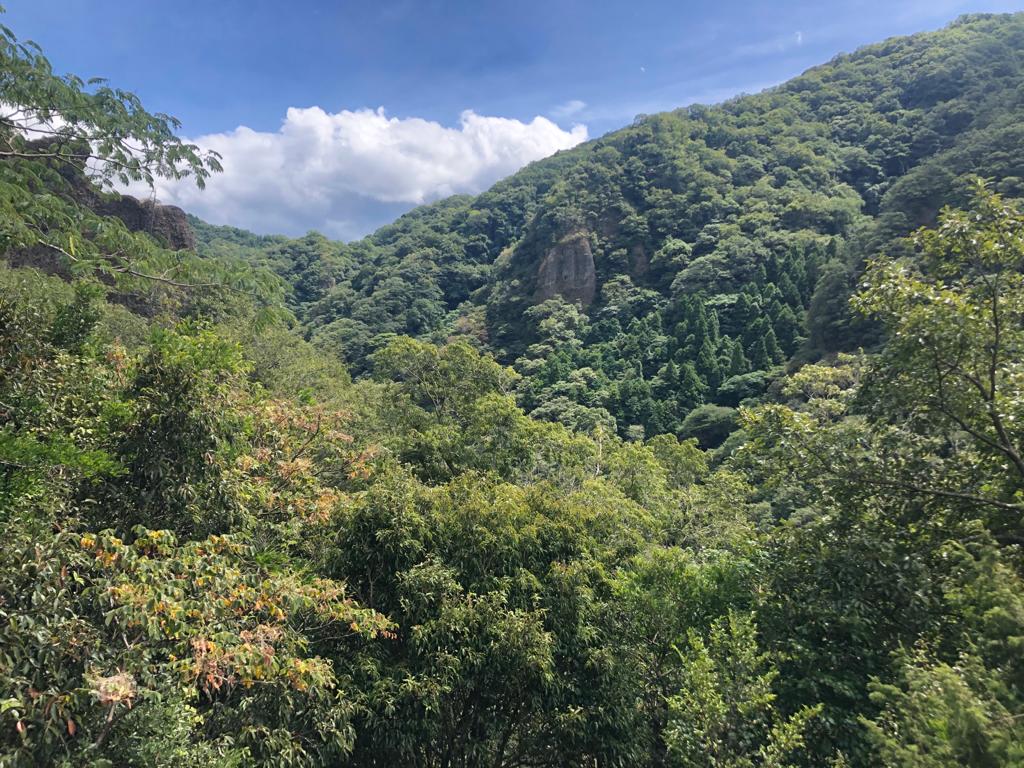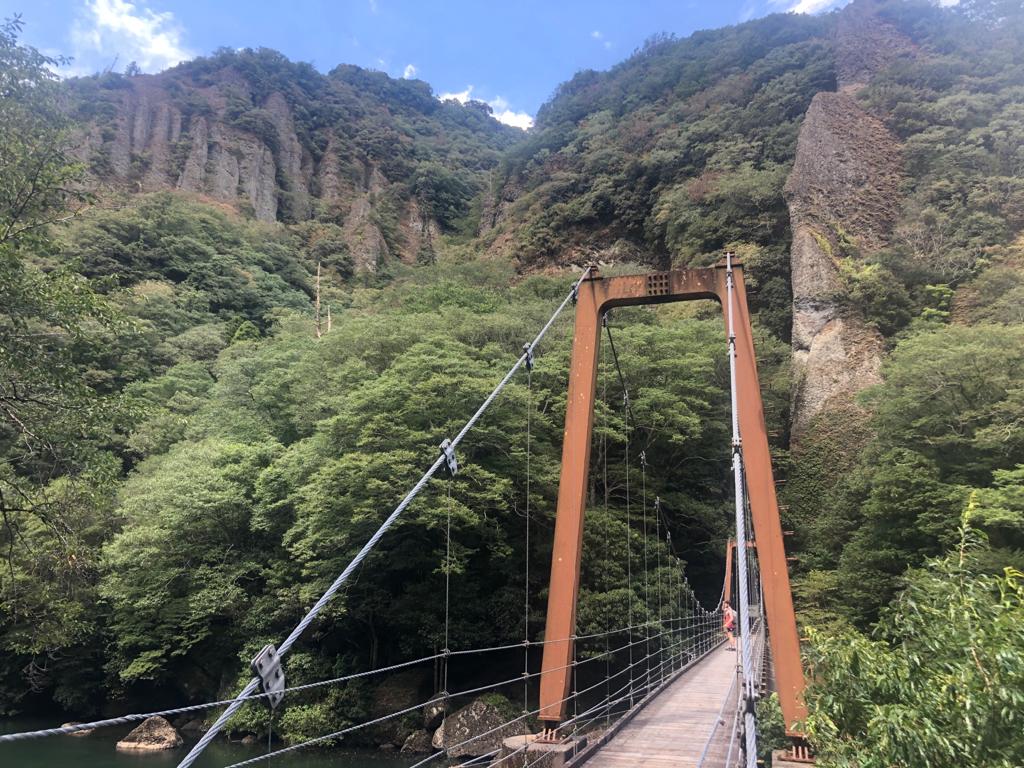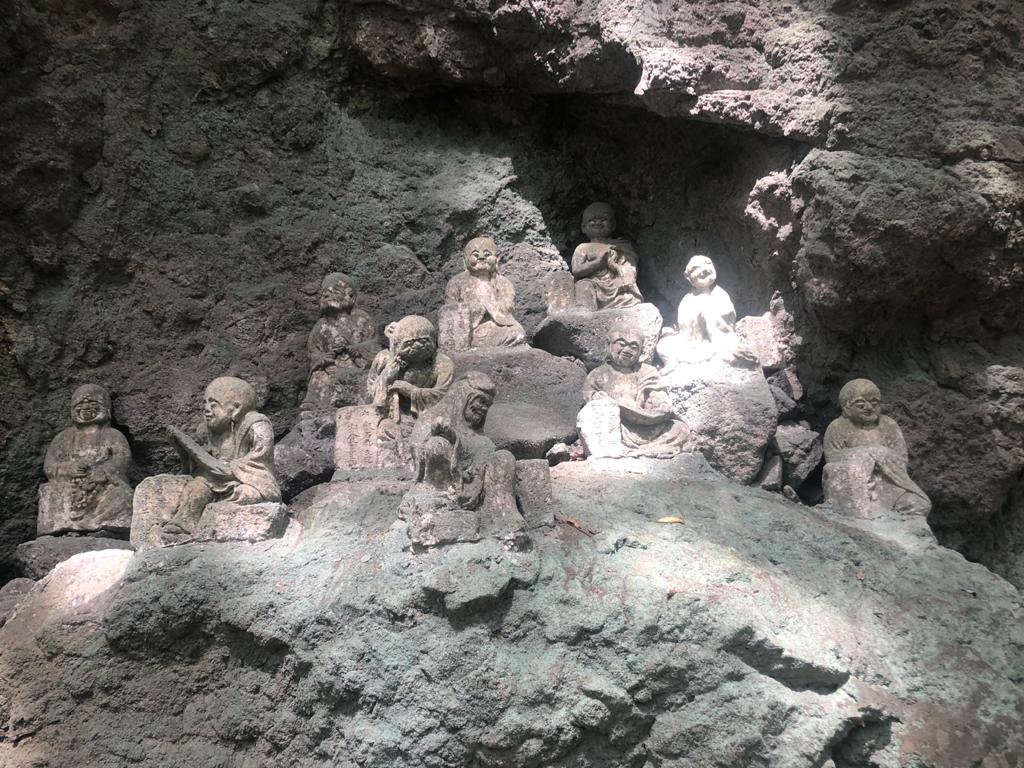Sometimes one forgets how feral a place Japan can be. In Tokyo, stray cats assessing me with utter contempt and the odd rat marching through the Saturday night detritus of Shibuya are about the extent of my wildlife encounters. During a late-summer battle through the forest of Tachikue Gorge in Shimane Prefecture however, the Japan of sprawling urbanity felt a world away.
This was a realm where sci-fi arachnids barred every trail and hung from trees like Halloween booby traps. Where dragonflies fluttered around our heads with helicopter-esque whirrs. Where a constant chorus of cicadas cut the air with a million different screeches. Where temples hid in groves, visited only by moss and bird shit.
There is a romantic quality to this kind of wilderness for sure. But for a pair who have been shaped by cities, every insect that flirts too closely with the earlobe elicits a flailing karate chop. A leaf caressing the shoulder can only be a deadly foe. All senses operate on their highest frequencies, tuned to constant states of red alert.
So why indulge in such masochism?
An Open Invitation
Tachikue Gorge, located just outside Izumo, a city famous for its Shinto shrine believed to be one of the country’s oldest, is a steep-sided valley framed by forests and 100-meter-tall rock walls jutting above the trees. The gorge’s hiking path covers a quiet section of the Chugoku Nature Trail, meandering alongside creaking suspension bridges that offer passage over the Kando River below.
With a day left in Shimane Prefecture, and no plans on the schedule, my girlfriend Dhwani and I headed for Tachikue Gorge for no better reason than we had nothing else to do, and it appeared far enough down the Google search ladder to be considered obscure.
We parked our car at a nearby campsite that was possibly abandoned or off-season, and was most certainly deserted. But the gorge offered an open invitation.
A succession of bridges glinted Senso-ji red in the blazing sun. The river, clear as glass, charted courses around rocks as though it were trying not to disturb them. A forest trail beckoned on the other side of the first bridge and we duly obliged.
Where the Wild Things Are
The trail hugged the sides of the gorge, flitting in and out of trees on the high banks. It was quiet, bereft of other hikers, never straying far from the scenery. But it was the spiders who demanded our attention.
The same black and yellow spindly-legged creatures that appear in their thousands as the cold weather in Japan subsides, clinging to every tree in sight and strung from every upright surface. Even on the bridges, where winds barrel down the gorge, spiders nestled siesta-like in webs ballooning outwards in the fashion of opened parachutes.
Their sheer number made every third step a limbo, every fifth a hurdle. All the while backhanding winged creatures who took much mirth in my increasing frustration.
As we arrived at the second suspension bridge, a fork appeared in the road. The right fork arced around the trees, running the river’s edge. It looked bucolic; the sort of place you might picnic and return home in merry spirits saying, “Well wasn’t that just lovely.”
The left fork led to an old set of mossy steps, shadowed by overhanging branches. It held a powerful allure.
Destination Unknown
At the top of the steps sat a wooden temple in a small clearing; quiet, unassuming, uninterested in being interesting.
Admiring the forest architecture, my eyes were drawn to another path at 9 o’clock. It was barely perceptible, yet worn enough to have been trodden on before.
“No,” said Dhwani, sensing my intentions.
“Where’s your spirit of adventure?” I replied.
I’m sure she rolled her eyes at this, but I was too busy staring upwards into the forest, hands on hips, hair sweeping in the wind. “We’ll find out where it goes… God willing.”
The path charged uphill, while the babble of the river became more distant and the density of the flora more impenetrable. Each time another fork presented itself, without hesitation I picked a direction and scythed through the cloud of bugs with the aid of sticks and expletives, like a junkie chasing the white dragon.
Caked in a patina of sweat, forest dust and cobwebs, I would turn around at regular intervals and offer the same words of reassurance, uttered with no foundation: “Whatever it leads to, it must be just around this bend.”
“Why do you make me do stuff like this?” Dhwani blustered from below.
I fear I had taken leave of my equanimity.
The Guardian of Souls
We started noticing small stone statues, plump deities and bodhisattvas, carved into the rock wall. They lacked knitted red hats, but I wondered if they were depictions of Jizo – the guardian of travelers and souls of the unborn – who often stands sentinel along walking paths or at graveyards, and straddles regional borders.
As we considered the significance of this, we approached what seemed like a dead-end but for the sun splitting the canopy above a boulder covered in tree roots. With some grunting and scrambling we used the roots to launch ourselves onto a bumpy conglomerate surface hot enough to sizzle steak.
Our breaths were heavy, we were saturated in sweat, but a calmness pervaded the air. Directly ahead, at the boulder’s highest point, sat a monument of stone inscribed with kanji, surveying the gorge.
It was evidently lugged up here in honor of someone or something a long time ago. Perhaps it was an exercise in ascetic endurance. Or was a lost soul hoping for ascension in the afterlife? Its symbolic importance was beyond us, but sometimes these things are best left to the theater of the imagination.
From time to time I wonder if anyone’s been up there since. Or if anyone goes up there at all. I just hope they bring patience and a big stick.
Updated On December 28, 2022













